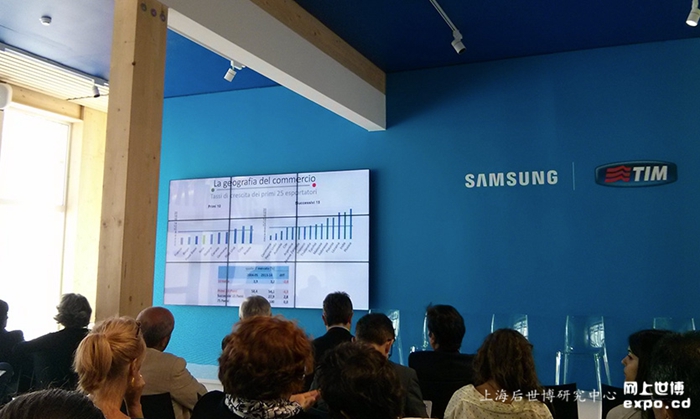On Friday June 26, at Expo Milano 2015, a conference took place on future scenarios for the agricultural and food sector in the context of the global food market. The conference was organized and moderated byFabrizio De Filippis, from Roma Tre University, and involved the participation of Giovanni Anania, from the University of Calabria, Alessandro Olper, from Milan University,Margherita Scoppola, from Macerata University, Anna Carbone, from University della Tuscia, Antonella Finizia, from Ismea, and Roberto Henke, from Crea. The Round-table then involved others in the debate, includingEzio Castiglione, from Ismea, Roberto Moncalvo, from Coldiretti, Fabio Massimo Pallottini, from C.A.R. and Italmercati, Ruenza Santandrea, from Gruppo Cevico, Paolo Zanetti, from Federalimentare and – via direct link – Paolo De Castro, of the European Parliament. The event was concluded by Luca Bianchi, from the Ministry of Agriculture, Food and Forestry.
A session devoted to the TTIP, with the participation of Paolo De Castro
The initial discussion was focused on the upcoming trade agreement between Europe and the USA, via the TTIP (Transatlantic Trade and Investment Partnership), which regulates trade and investment between the two sides of the Atlantic. Various opinions were expressed on the agreement’s potential economic effects, whilePaolo De Castro highlighted the fact that – from an Italian point of view – the agreement would apply to two markets which could be described as ‘complementary’: Italy imports raw materials from the USA and exports finished products such as wine, pasta and oils. "The debate is still very much open – explained De Castro – but in the coming weeks the European Parliament and the US will have to decide whether to approve the agreement or not.”
The future of our agricultural and food exports
Roberto Henkeanalyzed Italian produce, “which notches up good results for exporting processed foods, but less so for agricultural products. Exports towards Germany, France and the UK have diminished, but are growing towards Asia and the Arab world.”Fabrizio De Filippisexplained how “world trade is growing thanks to the trading of raw materials and semi-finished products. Italy’s share of the market has dropped, but our Made in Italy compartment does show an excellent “distance index”, which takes into account the destinations of our products. We need to try to improve our sales distribution, even though we can’t boast giant players.”Ruenza Santandreahighlighted how it is impossible for Italy to be competitive in the commodities market, where what counts is simply offering the lowest prices. “Our producers simply cannot compete with most countries, which are able to produce with lower fixed costs.”

